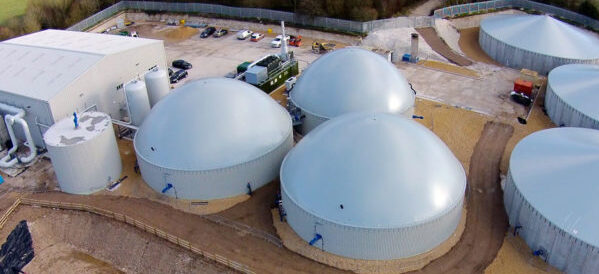2024 To Be ‘Watershed’ Year For Biogas Sector In India, Says Industry

The year 2023 witnessed significant momentum in India’s biogas industry, fueled by ambitious declarations both from policymakers and the big corporate of India. SATAT continued to play a pivotal role as an umbrella mechanism facilitating the biogas industry’s growth. Centre has mandated the phased blending of biogas by the oil marketing companies. Currently 50-60 sizable bio-CNG plants are operational throughout the country but that looks like a drop in the ocean when we compare it the government’s plan of building at least 5,000 biogas plants in India by 2027 – which in fact is unavoidable for the country’s energy security and the growing halo of ‘Atmanirbhar Bharat.’
Looking ahead to 2024, the biogas industry anticipates a pivotal year. Numerous plants under construction are poised to become operational, while others in the planning stage will progress to the construction phase. Technological advancements are expected to gather momentum, and the supply chain, particularly concerning the provision of raw feed to the plants, is projected to become more streamlined and efficient. Additionally, there is an anticipation of increased localization of equipment and technology gaining momentum in the industry. With a cautionary note, the industry believes that 2024 will be a watershed year in the journey of the biogas industry of India.
A Year Of ‘Output’
Aashish Dutt from London School of Economics and Co-Founder of SAAF Energy says that 2024 will be an interesting & exciting year for the entire biogas industry as results of all the policy level interventions will be seen. “All the investments in the industry will start to materialize in 2024. All the headlines and buzz created in the last one and a half year or so, will now see the results of that on the ground. The MoUs will translate into projects getting installed and commissioned and new investments coming in.”
 Speaking on the prevailing situation of technology, Aashish says that there is room and opportunity for technological growth and improvements. “In agri-related areas there is a technology gap. We expect more & more agri-based bio-CNG projects taking off. 2024 presents an opportunity for a plethora of technologies to be implemented at scale and for us to compare advantages and disadvantages of different technologies,” he added.
Speaking on the prevailing situation of technology, Aashish says that there is room and opportunity for technological growth and improvements. “In agri-related areas there is a technology gap. We expect more & more agri-based bio-CNG projects taking off. 2024 presents an opportunity for a plethora of technologies to be implemented at scale and for us to compare advantages and disadvantages of different technologies,” he added.
The SAAF Energy co-founder opines that the challenge is in adapting technology to the very unique Indian context. “How can one techno-commercially adapt these technologies in a way that makes these investments viable & profitable over a long time is really the question. The operation and maintenance of these technologies will decide the future,” he said.
In 2024, SAAF Energy will continue its journey from small scale to large scale projects. Within a large scale SAAF is moving from consulting to engineering. Now eventually the firm will also start doing turnkey large scale projects in India. “That will be the natural progression for SAAF in 2024. We won’t do anything that is drastically different,” Aashish Dutt mentions.
He says that 2024 will also continue to witness some of the old but complex challenges and supply chain is on top of that list. “The supply chain issues should be left to the industry to figure out how to deal with it. The range of plants has been increasing for the past 20 months but you can’t achieve those targets because output is a function of input. Even the best demand and best technology can’t deliver if you don’t have the supply chain” reasons Aashish.
Big Players Will Make A Difference; Supply Chain Models To Glow
Ashvin Patil, Founder of Biofuels Junction that has emerged as a strong player in the feedstock supply chain, says that 2024 will be the first year when you will see many plants in operation mode and many in the finalization stage. “This year is going to be important for two reasons. One pertains to clarity on demand & policy matters. There is a directive from the government on first voluntary mixing of CBG and then targeted usage of CBG for both automobiles and city gas distribution. Second, with so much experimentation, there are models that are getting streamlined on how to make CBG from various feedstocks,” he adds.
The policy makers are mulling with further clarity on the usage of manure – the byproduct of CBG plants. “When there is ample clarity on the hurdles of projects, we will see a great year in 2024 for the CBG industry.”
On supply chain issues, The Biofuels Junction co-founder says that with clarity on project execution and other hurdles getting removed, supply chain will be getting renewed focus in 2024. “CBG players’ involvement is important because for them, this is the only unsolved thing in the biogas industry. Capital, technology, optic is there….the only loose thing is feedstock supply.”
Patil holds that there is lots of participation and discussion from the CBG players for the feedstock supply chain. We are seeing greater cooperation on that side from the buyers.

On the question of technology, Patil says players who are on the forefront of technology like Thermax, Praj etc. are coming into the CBG field. They would bring the technology. “In CBG projects require equipment and also culture which is required for anaerobic digestion of various kinds of feedstock to produce CBG gas. These advancements on the technology side are very helpful. More importantly, large players like Reliance & Adani are keen on the CBG vertical. They bring technological advancements”
With regards to capital requirement in the biogas sector, Patil mentions that venture funding is now available that will help eliminate the capital poverty and give a push to CBG in 2024. Ashvin Patil recounts, “This is my experience from the interactions with industry stakeholders including investors. CBG is the main topic of discussion like how CBG will take India ahead. These are surely signs that people see the viability of CBG in coming years.”
Speaking about the trajectory of Biofuels Junction in 2024, he said that the company will focus on the supply chain of feedstock, building strength through teams on the ground.
“CBG plants require a large volume of feedstock in one location. Plants are also willing to be close to raw material sources so that transport expenses are minimized. Furthermore, corporates are willing to use CBG and be a partner there. This makes the supply chain even more efficient and viable. Our efforts are to focus on select plants where we can be a single source supplier of feedstock to them. And our team on the ground is our strength,” said Patil.




